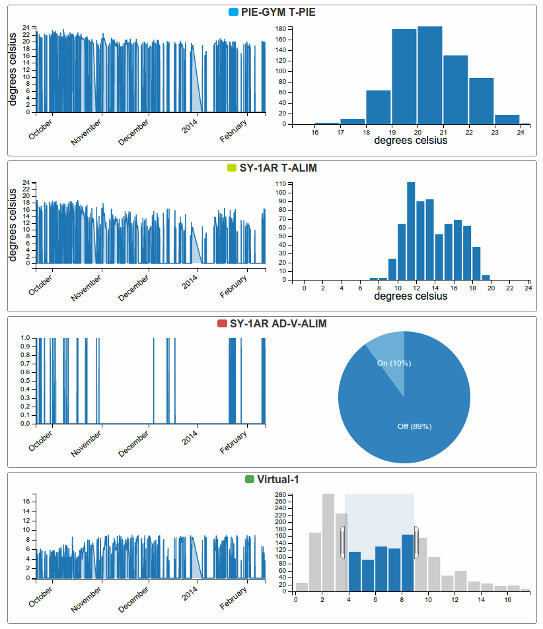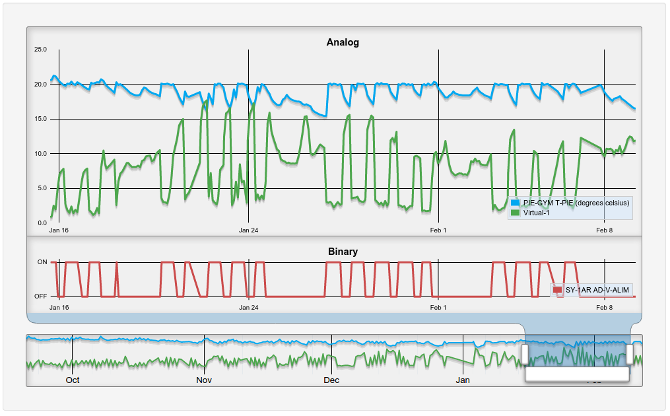In the last post, we started explaning how our harmonized timeseries worked.
We can now introduce and explain the brand new Virtual Objects.
Virtual objects are objects that can be created by using other (real or virtual) objects.
It’s clear, isn’t it?
No?
Okay, let’s say you have a hot water system. You recorded the temperature going in, the temperature going out and the flow.
As any engineering student will tell you, this is all you need to calculate the power consumption of the system.
So, how would you approach this if you wanted to study the power consumption?
If you catched the system early enough you could have created a variable (updated by the BAS programs) and then record it.
Power_analog_variable = (Temp-2 - Temp-1) * Flow
There are 3 problems with this approach.
First, controls are much more proprietary than most of us would like. Even by knowing well in advance you might need this variable, there’s no guarantee you will be able to create it.
Second, creating variables for every single “maybe I’ll need this…” would take way too much time.
Finally, in a project spanning years, you WILL make some mistakes when creating the variables, or simply forget to create some of them.
Thankfully, with virtual objects, the need for a complicated and extensive preparation disappears overnight.
You don’t need to know in advance what you’ll want to observe. As long as you recorded enough fundamental data from the sensors, you can recreate any object you want.
If you’ve read the last post on how our hamonized timeseries were sanitized, it should be easy to understand how we can robustly handle virtual objects, as shown in the picture below:
If you look closely, you’ll see that virtual objects return timeseries in exactly the same format as the harmonized timeseries by which they are created. This is no accident: for any consumer of our harmonized timeseries, virtual objects are indistinguishable from real objects. This means that all the existing tools will work just as well with those brand new virtual objects!
See this capture of our Analytics tabs. One of these objects is virtual:

The same object in the Timeseries tab (green line):

This object was never recorded (It doesn’t even really exist). It was created months after the recording, and yet we can use it as if it was there all along.
By this point, you should start to see how these virtual objects can save you a whole lot of time, while multiplying the usefulness of Vigilia as a whole.
If you find surprising ways in which these virtual objects save you time, please let us know, we always love to hear stories from our users.


